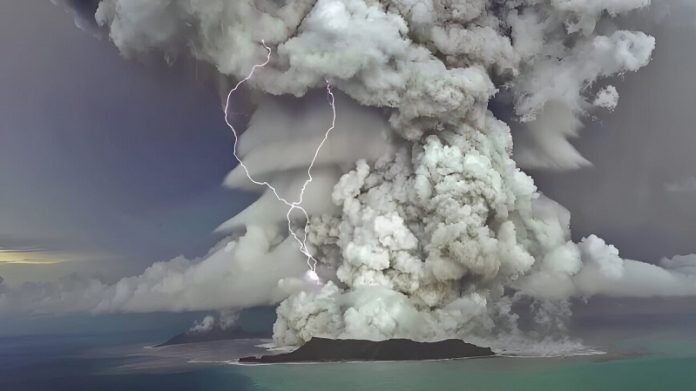
When the Hunga Tonga-Hunga Ha’apai volcano erupted on January 15, 2022, it did more than just trigger tsunamis and send shockwaves around the globe.
According to a study by Harvard’s SEAS and the University of Maryland, this eruption significantly altered the stratosphere’s chemistry and dynamics, leading to considerable ozone layer losses.
The eruption was extraordinary, injecting a massive 300 billion pounds of water vapor into the stratosphere, an area typically dry and located 8–30 miles above Earth.
This is where our protective ozone layer resides, making the event’s impact even more significant.
The Hunga Tonga-Hunga Ha’apai eruption is noted as the largest explosion ever recorded in the atmosphere. The force was so strong that it propelled materials into the lower mesosphere, over 30 miles above the Earth, a height never reached by previous volcanic eruptions.
Researchers, including David Wilmouth from SEAS and Ross Salawitch from the University of Maryland, used data from NASA’s Microwave Limb Sounder on the Aura satellite to track the movement of this water vapor and its effects.
They analyzed the stratosphere’s temperature and levels of various compounds, including chlorine monoxide and nitric acid, comparing the post-eruption data with records from 2005 to 2021.
The team found that the eruption caused both chemical and dynamic changes in the stratosphere. The sulfur dioxide released led to an increase in sulfate aerosols, which facilitated faster chemical reactions.
These reactions, along with the presence of additional water vapor, caused widespread alterations in the concentrations of compounds like ozone.
The eruption’s aftermath saw a cooling effect in the stratosphere due to the extra water vapor. This change in temperature led to altered circulation patterns, resulting in decreased ozone levels in the Southern Hemisphere and increased levels over the tropics. The peak ozone decrease was observed in October, nine months following the eruption.
This event’s long-term effects are still being studied. Researchers aim to follow the impact into 2023 and beyond, particularly as the water vapor moves towards the Southern Hemisphere’s pole. There, it might amplify ozone losses in the Antarctic, with elevated water vapor levels expected to linger in the stratosphere for several years.
This research, which also involved James Anderson, Freja Østerstrøm, and Jessica Smith, highlights the profound influence natural events like volcanic eruptions can have on our planet’s atmosphere.
Understanding these impacts is crucial for predicting and mitigating changes in our environment, especially in the context of global climate dynamics.



